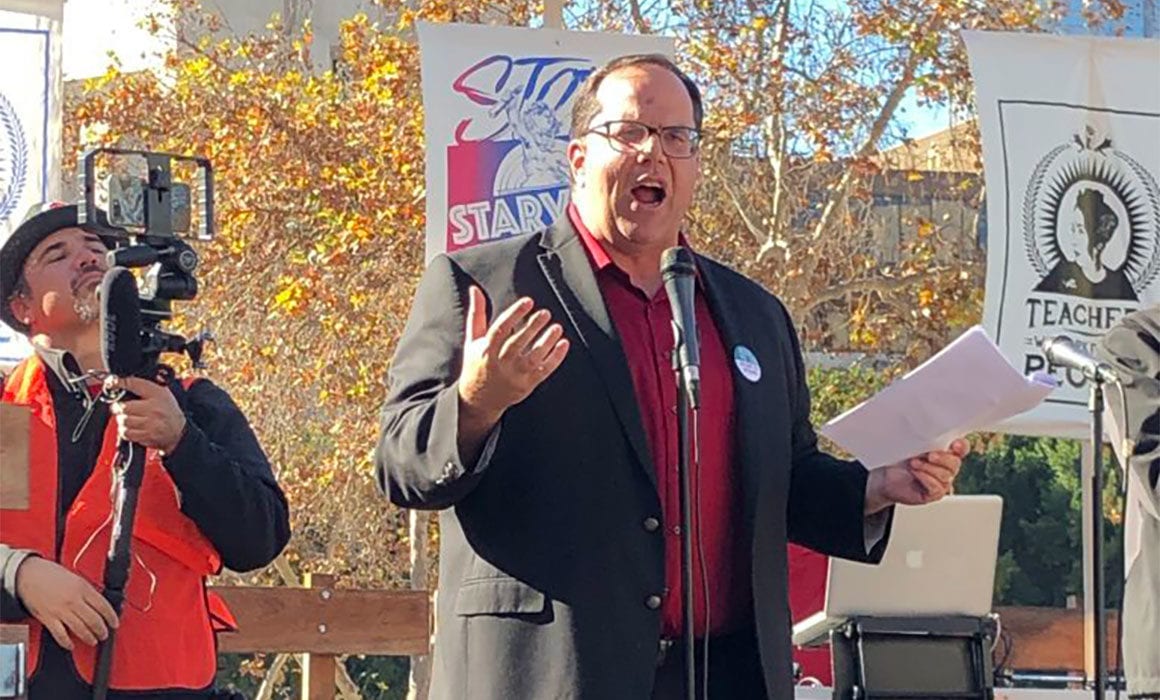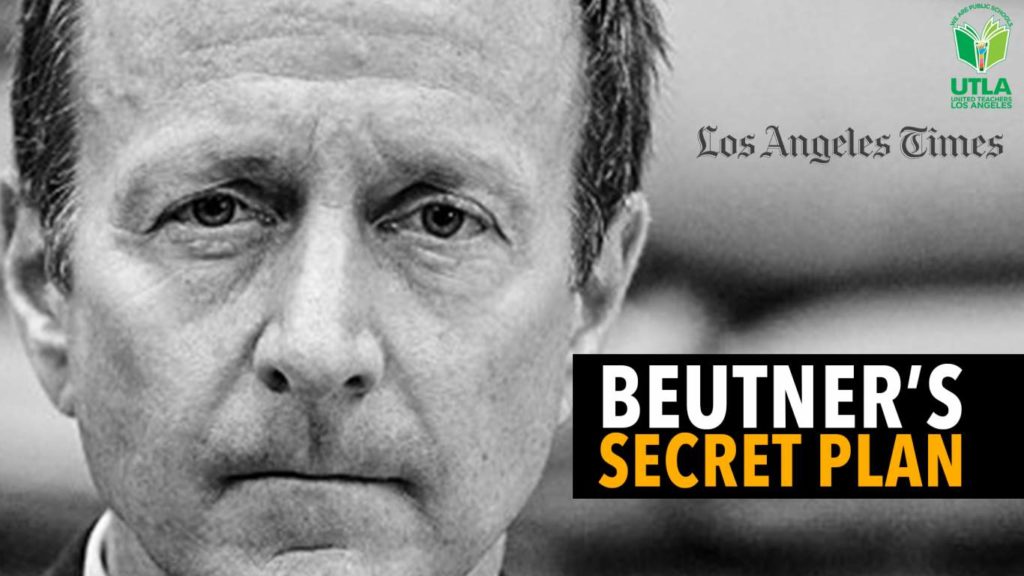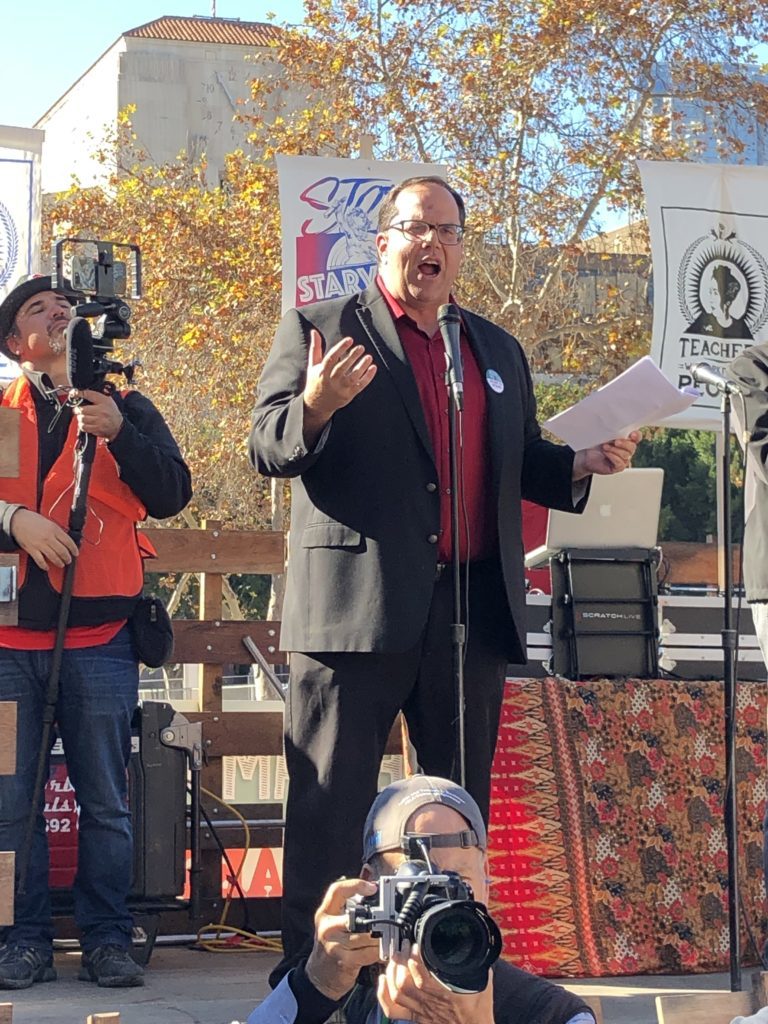
United Teachers Los Angeles members won several major victories during their six-day strike in January — lower class sizes, more support services for students, and plans to reduce time spent on testing. But perhaps more importantly, the union raised community awareness about and ultimately squelched Superintendent Austin Beutner’s planned restructuring of Los Angeles Unified School District using the “portfolio model.”
Rumored for months to be in the works, the secretive plan, which Beutner referred to as a “reimagining” of the district, would have broken LAUSD into 32 local networks, decentralizing oversight and (euphemistically) broadening student enrollment options.

Although Beutner tried to distance himself from the actual term “portfolio,” Kitamba Group, the consulting firm he brought in to make recommendations, had worked with other districts on implementing portfolio strategies. Their report, which was leaked to the Los Angeles Times in November, referenced the idea of portfolios multiple times, and several of their recommendations contained portfolio-like aspects.
“The portfolio plan would have destroyed the district,” says UTLA president Alex Caputo-Pearl. “Kitamba was brought in, along with other consultants associated with implementing portfolio models in districts across the country, to completely privatize LAUSD. Beutner tried to keep it confidential because he knew UTLA would use it to expose his compromised position in the district as a noneducator businessman brought in to implement the vision of folks like Eli Broad, Michael Bloomberg and Wal-Mart.”

Advocates of the portfolio model, which has been implemented fully or partially in school districts such as Indianapolis, Atlanta, Memphis and New Orleans, say their intent is “to upend school districts.” They suggest public school boards should treat their schools as if they were a stock portfolio, and keep or “dump” them accordingly.
Simplified, the portfolio model focuses on accountability, primarily based on test scores; decentralization of district management; closing or reconstituting underperforming or “failing” schools; and perhaps most controversially, creating more choice and competition through the expansion of charter schools.
The idea and the terminology originated with Paul Hill, a University of Washington professor who argued in 2006 for a new system where “school boards would manage a diverse array of schools, some run by the school district and others by independent organizations, each designed to meet the different needs of students. Like investors with diversified portfolios of stocks and bonds, school boards would closely manage their community’s portfolio of educational service offerings, divesting less productive schools and adding more promising ones.” Hill founded the Center for Reinventing Public Education, which has been promoting the portfolio model since its inception.
Education researcher and public education advocate Diane Ravitch has called the portfolio model “the Trojan horse of privatization.” Ravitch, who served as assistant secretary of education under President George H.W. Bush, writes: “The privatization of public education is a dagger aimed at democracy.”
Measuring the results of the portfolio approach is difficult (the model isn’t implemented exactly the same way in any two given cities), and claims by advocates are often based on sketchy evidence. New Orleans, which is often touted as an example of success, implemented the model in the wake of Hurricane Katrina. But student and community populations had shifted in the wake of that disaster, some low-performing schools had been shut down altogether, and perhaps having a greater impact than any restructuring, there was a significant influx of new funding (roughly $1,500 more per student) to help the recovering city’s schools.
Recent evidence suggests that any initial gains may have been short-lived, as recent test scores have been backsliding. In Indianapolis, where roughly a third of students now attend charter schools, there is little significant difference in performance between student outcomes at those charters and at traditional public schools. For students enrolled in online charters, the outcomes have been notably worse.
Despite mixed results and leading figures like Ravitch sounding the alarm, there is big money behind the portfolio idea. The City Fund, an organization formed last year, has raised nearly $200 million to promote the portfolio model in cities across the country. Much of that money is coming from charter school and privatization advocates such as the Walton Family Foundation, Netflix founder and CEO Reed Hastings, and the Laura and John Arnold Foundation. Underscoring the close link between portfolio advocates and the charter school industry, The City Fund, in its presentation to potential donors, suggested that charter schools should serve 30 to 50 percent of students in its target cities. That figure mirrors a 2015 plan by billionaire Eli Broad’s foundation to ultimately enroll 50 percent of LAUSD students in charter schools.
UTLA credits the long organizing buildup to January’s strike and the strike itself as key to Beutner’s April revelation that he would not be following through with major changes promoted in the Kitamba report.
“We educated our members and the community as to what they were trying to do, and it infuriated them,” says Caputo-Pearl. “Our organizing helped people understand the macro strategic plan that was unfolding, and reminded them that LAUSD is a civic institution worth fighting for.”
In May, Beutner finally released a new version of his plan. Rather than a massive restructuring of the district, the scaled-back proposal focuses more on principals as instructional leaders, geographical alignment of schools assigned to district middle management, and more funding flexibility. The plan is no longer a “reimagining” of the district and was outlined in a memo to the LAUSD Board of Education now simply titled, “The Work Ahead.”
The Discussion 0 comments Post a Comment